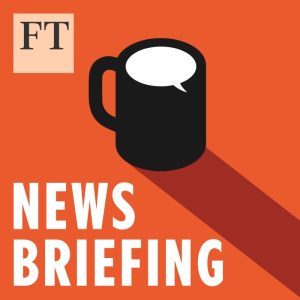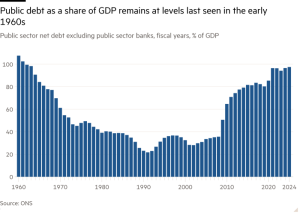Chinese managers limited flows to US funds after Trump victory

Stay informed with free updates
Simply sign up to the Exchange traded funds myFT Digest — delivered directly to your inbox.
Latest news on ETFs
Visit our ETF Hub to find out more and to explore our in-depth data and comparison tools
Major Chinese fund firms have restricted subscriptions into several products that invest in US stocks amid expectations of increased investor interest in the market following the post-US election rally.
China Asset Management, the country’s second-largest fund firm by assets, in the week following the US election limited the size of new investment permitted in one of its qualified domestic institutional investor funds.
From November 14, ChinaAMC slashed the upper limit for daily new subscriptions into its ChinaAMC S&P 500 ETF Feeder Sponsored Fund to just Rmb100 ($14) per investor.
The fund firm cited the need to protect the interest of existing fund holders and ensure the stable operation of the QDII fund that had Rmb137mn in assets as of September 30.
ChinaAMC had kept the limit at Rmb1,500 since October 23, compared with Rmb1,000 since October 9, fund documents showed.
The QDII scheme, which was launched in 2006, allows licensed Chinese financial institutions, such as fund houses and securities firms, to use the quota allowance to invest in foreign securities markets, including feeding into offshore funds.
Tianhong Asset Management last week also reduced the high investment thresholds for five of its QDII funds, including two that focus primarily on the US stock market.
The company announced that from November 12, the upper subscription limits of the Tianhong S&P 500 Sponsored Fund QDII-FoF and Tianhong NASDAQ 100 Index Sponsored Fund would be set at Rmb200,000, lower than the ceiling of Rmb1mn since October 15.
Tianhong announced it had further reduced investment in the two products to Rmb20,000 from November 19, along with lower ceilings for some other QDII funds.
CCB Principal Asset Management also lowered maximum daily new subscriptions for CCB Principal NASDAQ 100 Index Fund to Rmb100 from November 8, down from the Rmb1,000 level since October 11.
“Given the market performance during Trump’s last term and a potential slowdown in the pace of the Fed’s rate cuts, we expect US bond yields to move up while US equities and US dollar enjoy a boost in the next two to three months, and short-term capital are more likely to flow into US equities,” said Zeng Fangfang, a public fund product specialist at fund sales and data platform Paipai Network.
Expectations of US President-elect Donald Trump’s economic proposals such as tax cuts have helped buoy the stock market, with S&P 500 closing at a record high of 6,001 points on November 11.
However, the initial excitement about corporate growth started to fizzle after Fed chair Jay Powell stated on November 14 that the central bank was not “in a hurry” to lower interest rates.
China’s QDII products tend to restrict purchases when investor interest leads to increased subscriptions and then eats up quota, Zeng told Ignites Asia.
A number of other fund firms in China have made adjustments in the opposite direction for their QDII products in a bid to capture investor interest.
From November 1, JPMorgan Asset Management lifted the subscription cap for its JPMorgan S&P 500 index Sponsored Fund to Rmb10,000 for each investor, compared with Rmb1,000 previously.
Harvest Fund Management from November 14 raised the daily subscription ceiling for Harvest American Growth Equity Fund and Harvest Nasdaq 100 ETF Feeder Sponsored Fund to Rmb50,000, versus Rmb10,000 since July 12.
Fund managers that had sufficient QDII quota available, were able to raise subscription ceilings to meet market demand and boost asset size, Paipai Network’s Zeng said.
#Chinese #managers #limited #flows #funds #Trump #victory





